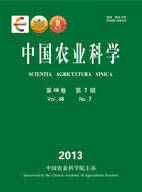-
Effects of Water-Nitrogen Management Patterns and Combined Application of Phosphorus and Potassium Fertilizers on Nutrient Absorption of Hybrid Rice Gangyou 725
- SUN Yong-Jian, SUN Yuan-Yuan, XU Hui, YANG Zhi-Yuan, QIN Jian, PENG Yu, MA Jun
-
Scientia Agricultura Sinica. 2013, 46(7):
1335-1346.
doi:10.3864/j.issn.0578-1752.2013.07.004
-
 Abstract
(
749 )
Abstract
(
749 )
 PDF (694KB)
(
989
)
PDF (694KB)
(
989
)
 Save
Save
-
References |
Related Articles |
Metrics
【Objective】In order to provide a scientific basis for high water-fertilizer use efficiency of rice, an experiment was conducted to study the effects of water-nitrogen management patterns and combined application of phosphorus potassium fertilizers on nutrient absorption and physiological characteristics of hybrid rice.【Method】Hybrid rice variety Gangyou 725 was used to investigate the effects of three water-nitrogen management patterns (submerged irrigation and optimized nitrogen (N) application, W1N1; controlled alternate irrigation and optimized N application, W2N1; and dry cultivation and optimized N application, W3N2) and different phosphorus (P)-potassium (K) combined applications on absorption of N, P, and K in rice, analyze their physiological characteristics, and study on correlations of N, P, and K absorption characteristics and its relationship with physiological index and grain yield. 【Result】The results showed that different water-nitrogen management patterns and P-K fertilizer combined application significantly affected N, P and K absorption, physiological characteristics and grain yield. W2N1 and suitable P90K90 combined application (P and K application rates both at 90 kg?hm-2) enhanced N, P, and K absorption at heading and maturity stages, increased the photosynthetic rate, superoxide (SOD) in flag leaves and bleeding intensity during grain filling, and activated malondialdehyde (MDA) in flag leaves, being the best model in this paper referred as the water-fertilizer regulating management model. Combined application of P90K180 resulted in superiority decrease of water-fertilizer regulating, yield increase not significant, and lowering the fertilizer use efficiency and the ratio of output to input. Compared with W1N1, W3N2 and suitable P90K180 had compensated for yield outputs. Correlation analysis indicated that there existed significantly positive correlations (r=0.644*-0.939**) between the amounts of N, P, and K, and between each of them and yield under different water-fertilizer regulation, and the amounts of different nutrients at heading and maturing stages and grain yield had a positive correlation with Pn, SOD in flag leaves, and root vigor (r=0.545-0.902**), and a high significant negative correlation with MDA in flag leaves (r=-0.612*--0.879**) at different growth stages at heading stage, with different correlation coefficients at different growth stages. According to the conditions above, it was important for delaying the leaf senescence, keeping root vigor, and increasing yield that the amounts of N, P, and K at heading stage and physiological metabolism of rice during 1-7 d after heading stage.【Conclusion】The results suggest rice plant growth could be improved and high grain yield and high fertilizer use efficiency could be achieved through integrating and optimizing water-fertilizer regulating techniques in rice production. W2N1 and suitable P90K90 combined application was considered to be optimum under the experimental conditions, optimum phosphorus (P)-potassium (K) combined application amount was P90K90 for W1N1, and P90K180 for W3N2.









